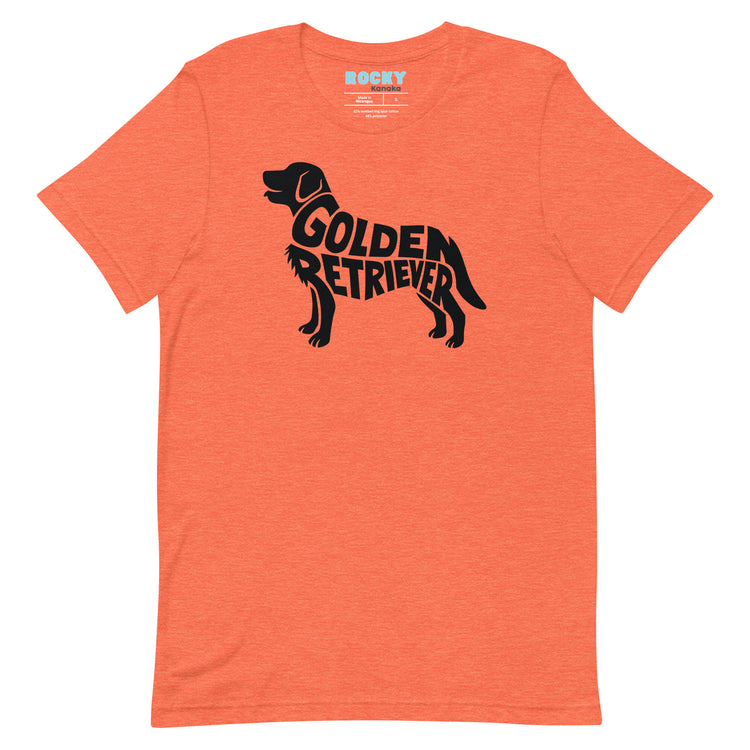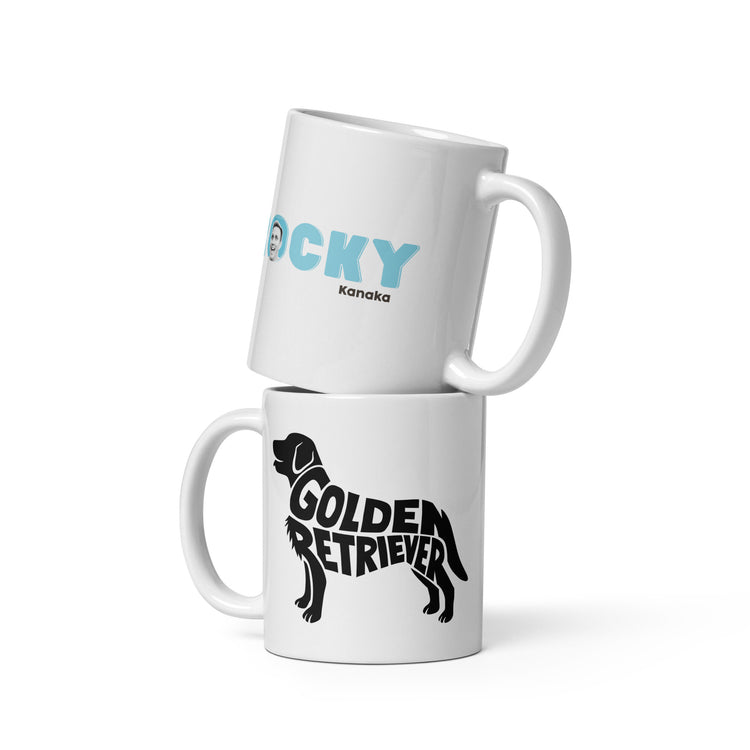Golden Retriever Puppy Has Megaesophagus
I fostered this golden retriever puppy for six months until he found his forever home. It was one of the most rewarding experiences I’ve ever had.
Meet Jalapeño

Jalapeño was a 6-month-old purebred Golden Retriever puppy who was purchased from a breeder. He was surrendered to Marley’s Mutts Dog Rescue by his family because he couldn’t properly eat or drink. For a long time no one could figure out what was wrong with him.
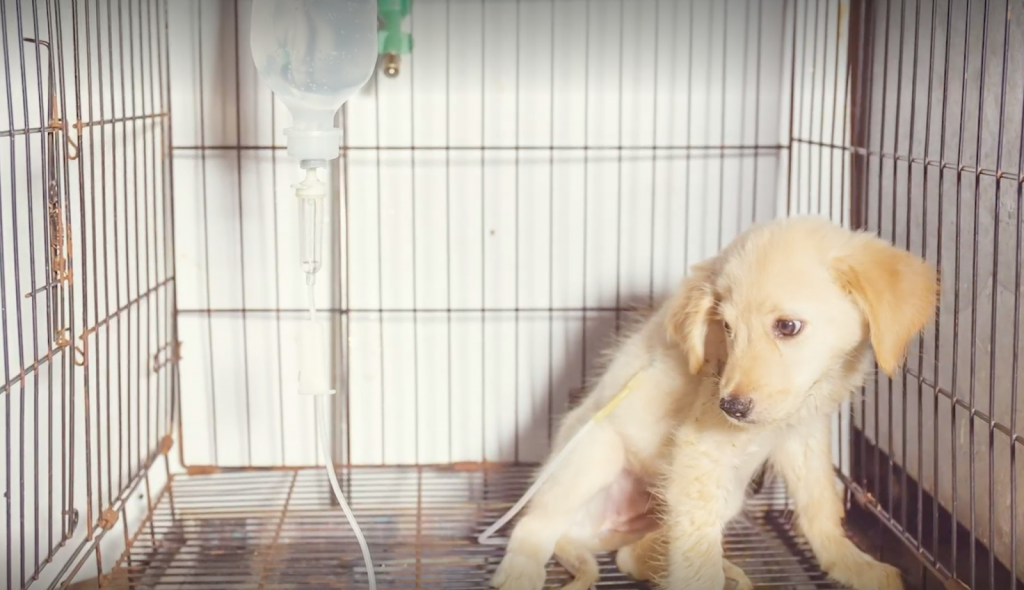
Then, finally, someone solved the puzzle. He suffers from a condition called Megaesophagus.
Aside from this condition, he is a perfectly healthy, normal, energetic puppy but to treat his condition Jalapeño requires a special feeding regimen that includes his food being blended with water so he stays hydrated, eating 3 meals every day and sitting for about 30 minutes after each meal and eating those meals in a special chair.
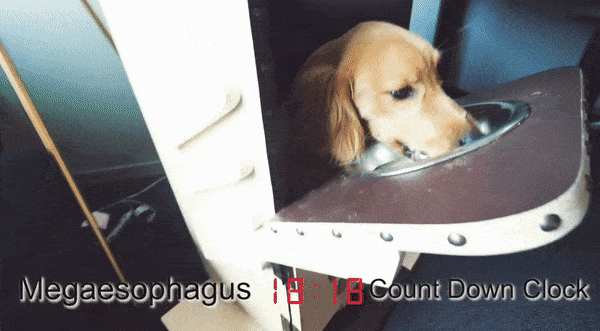
Jal is a great example of a dog that looks totally normal on the outside but is struggling on the inside. When people meet this perfect golden retriever puppy they can’t believe that he’s actually going through a lot. But there’s always a real connection.
Jalapeño is a great example of a dog that looks totally normal on the outside but is struggling on the inside.
I knew I could help this golden retriever puppy find his forever home, so I decided to foster him.
What is Megaesophagus?

It’s a big word that basically mean he can’t swallow.
In the past, a diagnosis of megaesophagus was usually a death sentence. Severe cases of the condition make it virtually impossible for a dog to hold down food and water. But there are ways to manage it.
Megaesophagus is a big word that basically means he can’t swallow
The esophagus is a muscular tube that pushes what is swallowed into the stomach. A dog with megaesophagus lacks the muscle in thier esoophagus to move the food and water.
This about how a normal dogs eat and drinks. Standing up with their heading hanging down. So the food must first go up and then go down.

A “megaesophagus” is like a deflated balloon. It passively collects food and water until it can take no more, at which point the dog regurgitates all that he has just swallowed.
This condition weakens the muscles of the esophagus, and dogs with this condition have a hard time swallowing. As a result, they will choke on any food and water. Ultimately, they’ll end up regurgitating their meals. In fact, megaesophagus is the most common cause of chronic regurgitation in dogs.
What Causes Megaesophagus?
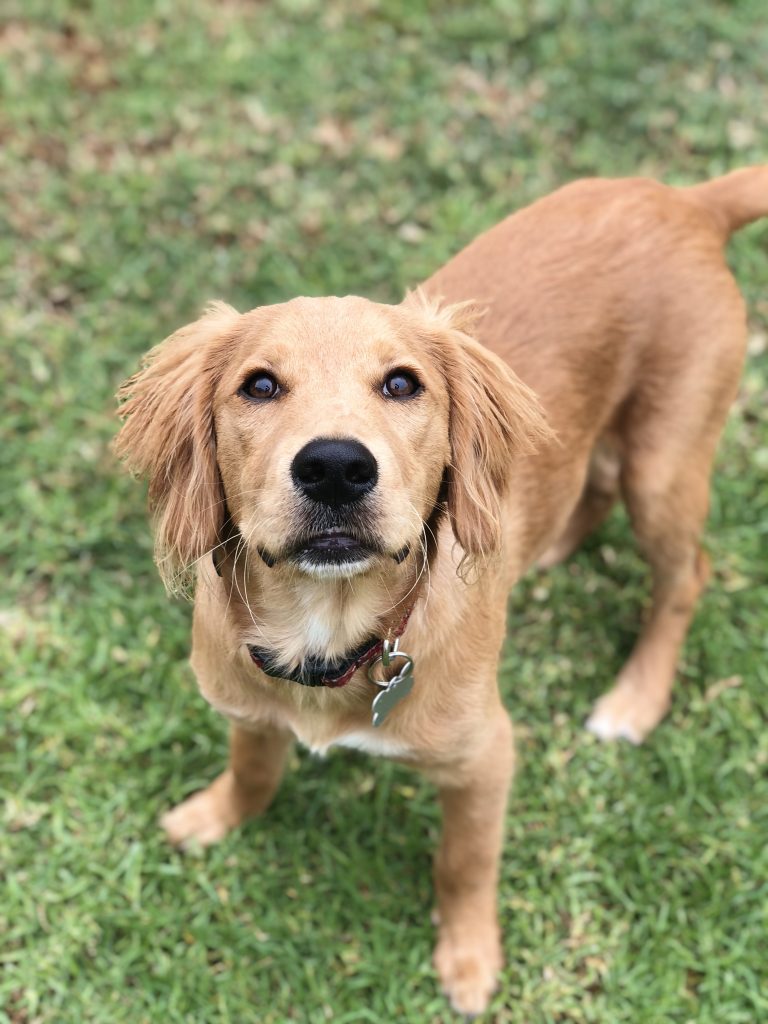
Megaesophagus is not something that can be caught. It’s either genetic or can be acquired (like diabetes where people are born with it or they get it later in life.)
Inherited Megaesophagus
In most cases, megaesophagus dogs are born with it. Sometimes, a dog may acquire the condition later in life, though this will frequently be due to aging.
Dogs suffer from megaesophagus more frequently than cats. Studies of the condition also show that it is more common in larger breeds. It is most frequently seen in the following breeds:
- Golden retrievers
- Irish setters
- Labrador retrievers
- Shar-peis
- Newfoundlands
- Great danes
- Greyhounds
Acquired Megaesophagus
In some cases, dogs can acquire or develop megaesophagus. In most cases, this will happen due to aging. As dogs get older, their muscles weaken, and the esophagus may lose its ability to properly push food to the stomach.
Sometimes, dogs may acquire the condition after being exposed to certain toxins. Other causes of acquired megaesophagus include head injuries, hormonal diseases, and inflammation of the esophagus.
What are the Signs of Megaesophagus In Dogs?
Megaesophagus dogs will present with very distinct symptoms. The most prominent and obvious will be regurgitation and an inability to keep their meals down. However, you can also spot megaesophagus by looking for some of its secondary signs, such as:
- Bad breath
- Emaciation from lack of food
- Symptoms of dehydration
- Frequent respiratory infections
It’s important to note that regurgitation is not the same as vomiting. Washington State University points out that both vomiting and regurgitation may be accompanied by retching, but regurgitation is far more passive.
When a dog vomits, it will expel the offending substance with force. There will be heaving and retching, and you’ll often find bits of partially digested food and bile.
Regurgitation, in comparison, is more passive. A dog may heave, but it probably won’t retch. Instead, regurgitating dogs will frequently drop their heads forward and let the food slide out. Regurgitated food will frequently be covered in a clear slime and may be tube shaped.
How Is Megaesophagus Treated?

In order to treat the condition, dogs with megaesophagus can’t eat like a normal dog, hanging their head over the bowl. Instead, they are fed in special Bailey chairs. These custom-made seats prompt the dog to sit up as they eat, which allows for gravity to push their food into their stomach. It’s common practice to allow the dog to sit in this chair for 20 minutes so that food doesn’t come back up.
In addition, you have to blend up their food so it’s digested more easily. It was 20 minutes three times per day where I could focus exclusively on this beautiful dog. I personally found that time with Jal to be a wonderful bonding time and learned that his condition doesn’t define him.
Spending time with someone and showing them love is a super power that’s within all of us.
What Is The Life Expectancy Of A Dog With Megaesophagus?
If caught early and properly treated, many megaesophagus dogs will live a normal life. Careful attention must be paid to ensure the dog does not eat anything while out of the Bailey chair, as this will cause regurgitation.
In some cases, congenital megaesophagus may even go away on its own. The most important thing to know about megaesophagus is that timely treatment is the difference between a happy, healthy dog and a very, very sick dog!
Sometime the appearance on the outside isn’t what’s happening on the inside
In other instances, megaesophagus is part of a larger problem. While treating this underlying issue may fix the megaesophagus, it will often cause a different set of symptoms. For this reason, the prognosis for dogs with megaesophagus and other conditions tends to be poor.
Do Dogs with Megaesophagus Make Good Pets?
Yes! At the end of the day, every puppy deserves a home. Having a pup with megaesophagus will require some training and a lot of vigilance, but your new companion is sure to bring you plenty of joy! Are you interested in fostering a dog? Take our fostering quiz to find out if you’re ready.
In this video I go over how to feed a dog with megaesophagus
So, What Happened To Jalapeno?
He got adopted! He found his forever home in Arizona.
By the way, Jal’s new name is Rocco and you can follow him on Instagram here.
Related Articles:
- Top 4 Biologically Appropriate Dog Foods for Golden Retrievers
- Farmer’s Dog vs. Ollie vs. Nom Nom vs. Spot & Tango: My 4 Dogs Tried Them & Here’s The Winner
- 13 Novel Proteins That Dogs with Allergies & GI Issues Can Eat
- 200 Rescues Specializing in Golden Retriever Adoption

